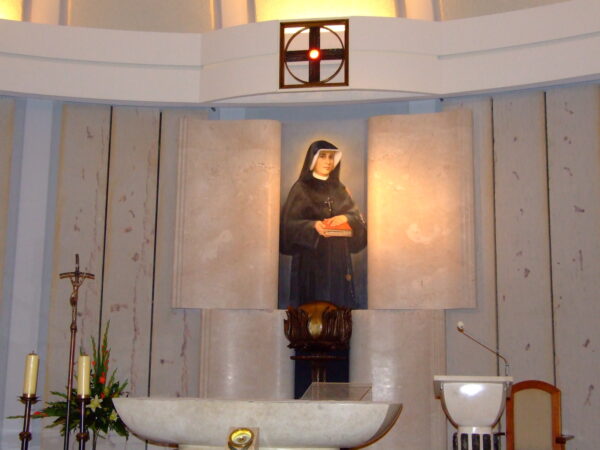Emptiness is usually not a positive thing. It often means that something is missing. Take, for instance, something as small as your favorite snack in the kitchen pantry. I for one hate the feeling of craving my favorite dark chocolate, only to find its usual spot on the shelf empty. I groan because what I wanted in the moment could not be satisfied.
This is a trivial example, for emptiness can infiltrate far more serious aspects of our lives. Maybe you are searching for a new job, but every time you check your email inbox, it’s empty. I experience this feeling when sending my children’s book manuscript to agents and writing competitions. No response. Or, maybe you are realizing a friendship or the relationship you are in is beginning to feel shaky and lacking substance. Empty. Maybe you are longing for a child to enter your life, but so far, that desire has not been fulfilled. In all these ways, God may seem silent and distant, and you may feel alone in your struggles. Empty.
Emptiness is a raw, difficult emotion to contend with. It feels counter to all the “fullness” of life that we long for and often thrive on: happiness, exciting events, hopeful adventures and new experiences. We may even dangerously expect to live out “perfect” Instagrammable moments, those glittery, shiny, idolized portrayals of fullness that are more frequently fraudulent than authentic. Emptiness, then, is certainly contradictory to all that secular society and social media tell us we should do and have. But, on a spiritual level, emptiness also seems contrary to what God stands for and all that he promises to us. After all, Jesus became incarnate so that we “might have life and have it more abundantly” (Jn 10:10).
However, I believe we can have fullness in emptiness, even if that seems paradoxical. I first came upon this concept when I read Father Richard Rohr’s book, “Eager to Love: The Alternative Way of St. Francis of Assisi.” I learned that part of a Franciscan approach to spirituality is the concept of non-dualistic thinking, which is rooted in St. Paul’s sermon to the Corinthians on wisdom and the mystery of the cross. Father Rohr writes: “For Paul, the deepest level of meaning is ironically the deep, grace-activated acceptance of a certain meaninglessness! We are able to leave room for God to fill in the gaps, and even trust that God will! This new leap of logic is often called faith.” Emptiness, then, is not meaningless abandonment, even if it feels like it is. We can turn to the Easter Triduum to witness this truth.
As Jesus hung suffering on the cross, he cried out, “My God, my God, why have you forsaken me?” (Mt 27:46). In this moment of heart-wrenching grief and excruciating physical pain, even Jesus felt abandoned by God the Father, left to suffer and die. When Jesus finally took his final breath, we by extension feel abandoned by God — how could he allow such suffering to fall upon our Lord, his son? How could Jesus be permitted to experience the greatest emptiness of all — death?
As Jesus’ lifeless body hung on the cross and was later taken down by Joseph of Arimathea, we feel the emptiness in that body, just as the apostles and Mother Mary must have felt. Their son, teacher, friend and Lord was suddenly gone. All the hope that they had built around the figure of Christ was gone. Their purpose in their new lives, gone. Empty.
Though it may be difficult to comprehend, God did not abandon Jesus, especially knowing what comes next: his resurrection. We can only have resurrection in death and through death — therefore, death (emptiness) and resurrection (fullness) coexist. Father Rohr says: “The revelation of the cross … [shows] that there is a way through all absurdity and tragedy, and that way is precisely through accepting absurdity and tragedy as part of God’s unfathomable agenda. If you internalize the mystery of the cross, you will not fall into cynicism, failure, bitterness, or skepticism. … The cross gives you a precise and profound way through the dark side of life and through all disappointments. … There seems to be a dark side to almost everything, but only the unitive or non-dual mind can accept this and not panic, but, in fact, grow because of it.” Therefore, emptiness and fullness, on a deeply spiritual and Christian plane, are one and the same.
This unified paradox of crucifixion and resurrection — life after, despite or through death — was further signaled during the Easter Triduum through another kind of emptiness: the empty tomb. When Mary Magdalene and the women first stumbled upon the empty tomb, they must have felt devastated. First, they witnessed their Lord die; now, the one remaining vestige they had to honor him by — his body — was gone. Talk about feeling abandoned by God!
It did not take long for them to realize, however, the true meaning of this emptiness — that Jesus had arisen and the fullness of life that he promised was made manifest. Suddenly, the empty tomb didn’t feel so empty anymore. Suddenly, it was filled with the promise of hope and new life!
There are many moments in our lives in which we are faced with what look like empty tombs. Take this year’s Easter, for instance. Many of us will still have to abide by pandemic-related rules and probably will not be able to celebrate the holiday in the ways we normally do. We may feel alone and forgotten by others and God. But we have to remember that even in those moments when we feel abandoned, we are not. God is always there, providing us with new life in him.
Though times like these may feel like the abandonment Jesus felt on the cross, we should instead view them empty tombs — as the fulfillment of the reality of the resurrection. Thus, as being full of God’s grace. This Christian perspective, Father Rohr states, “can absorb and appreciate paradox — which is order within disorder, redemption through tragedy, resurrection through death, divinity through humanity. … The compassionate holding of essential meaninglessness or tragedy, as Jesus does in hanging on the cross, is the final and triumphant resolution of all the dualisms and dichotomies that we ourselves must face in our own lives. We are thus ‘saved by the cross!’” Once we realize that, as seen in the crucifixion and resurrection, emptiness and fullness are one and the same, we realize that God has a plan for us that will unfold accordingly and according to his time. We only need to be ready to walk with him.




